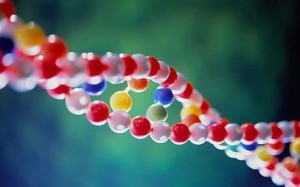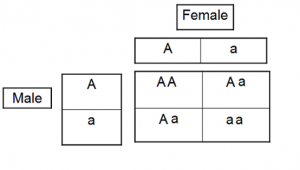Before you further confuse yourself more… have a peak at what is genetics all about! It’s important to know how your hamster comes about as it may affect your desired offspring or you just want to know your furry ball a little more. It will be a little dry, but hey! After reading this you will had ‘leveled up’ in hamster knowledge!
No two individuals have the exact same DNA and the reason for this is variation. Genetics explains why hamsters are very different from other species. For most mammals, genes occur in pairs, one inherited from the mother and another from the father. DNA contains chromosomes and genes are part of chromosomes. Chromosomes which exist in look-alike pairs are known as homologous pairs. They contain the same information but they contain 2 different versions from the parents so they will be slightly different. This is what makes the hamster genetically unique. Syrian hamsters have 44 chromosomes, with each and every single gene determining its eye colour, fur colour and size etc. Of the 44 chromosomes, two sex chromosomes play the part of determining the sex of the hamster. A male will have chromosomes XY and a female, chromosomes XX. The genes which is transmitted along to determine the gender is also known as sex linked. Note that X and Y are not homologous. Each homologous chromosome has the same set of genes; function in the same sequence at the same location is known as locus. For example, in a gene controlling the hair colour, there will be 2 alternate genes at the locus (known as alleles).
Genotype is a term used for animal genetics or hidden characteristic. Let’s take a black hamster as an example. A gene which codes for black fur in hamsters is denoted as A, while the recessive is a. The 3 possible genotypes will be AA, Aa, aa. AA and aa is said to be homozygous while Aa is said to be heterozygous.
Phenotype is a term used to describe an animal’s physical appearance. Note that black fur will only appear if the gene is recessive. Using the above example, since black fur hamsters only have the recessive gene, only hamsters with aa genes will be black while hamsters with AA and Aa genes will not be black physically.
Since there are two pair of genes, a symbol will be represented. If an allele, which affects the appearance of the animal, is presented in one copy it is known as dominant and the symbol is capitalized. For a recessive allele to be shown in appearance there must be two copies of it and the symbol is in lower case. There are some genes which are incomplete dominant. For example, homozygous silver grey coat SgSg will be different in colour compared to heterozygous silver grey coat Sgsg.
A Punnet Square is a device used to illustrate the expected outcome in a mating process. The known gametes (only 1 gene eg: A) are written along the top and side of the squares.
On the top shows the female gametes Aa and on the left shows the male gametes Aa. Both parents are heterozygous, which means both parents are non-black.
Genotype:
Probability of getting AA = ¼
Probability of getting Aa = ½
Probability of getting aa = ¼
Phenotype:
Probability of getting black hamsters (aa): ¼
Probability of getting non-black hamsters (AA, Aa): ¾\
On the top a tortoiseshell hamster illustrates X chromosome inactivation. These hamsters are always female and heterozygous for an X-linked coat colour gene. During its early development, one of the X chromosomes in each cell will be inactivated for life. The choice is random but all descendent cells have the same X chromosomes inactivated. On rare occasions, a male will be tortoiseshell but this is because it has XXY gene with the possibility of it being sterile!
Genes replicate almost faithfully, but there are cases where genes change and evolution occur. This is when mutation takes place. However, a mutation in hamster fur colour will have an undesirable effect in the wild – predators will be able to spot them easier and the chances are such that their mutations will not be passed down to the future generation. Thus the hamsters are usually of the same colour, and this is known as the wild type. Colours and markings of a wild type hamster are also known as agouti. In captivity, mutations are looked out for and selective breeding is done to obtain the desired mutation.
And….. Congratulation! You had just ‘leveled up’! Now you will be able to explain some of the phenomenon of your hamster and have a deeper understanding of them! Now that you know the hamster from the ‘inside’, next post we shall see what are their needs and wants! Stay tuned!
By Eow Xiang Ru, TheOnePet
Vetted by: Kathleen Koh



